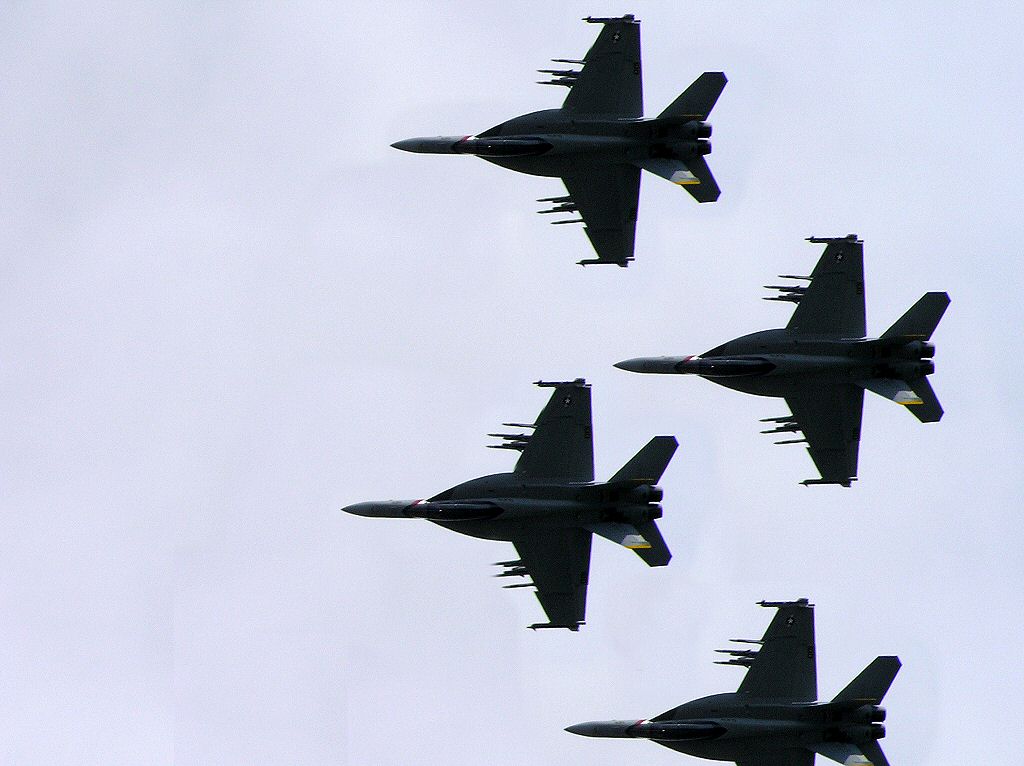|
McDonnell Douglas F-18 Hornet is in service with United States US Marine Corps, US Navy and NASA, Royal Australian Air Force, Schweizer Luftwaffe Swiss Air Force, Spain Ejército del Aire Española Spanish Air Force, anadian Armed Forces, Air Command, Finland Suomen Ilmavoimat Finnish Air Force, al-Quwwat al-Jawwiya al-Kuwaitiya Kuwaiti Air Force and Malaysia Tentera Udara Diraja Malaysia Royal Malaysian Air Force.
A larger version of the of the FA18 Hornet has been designated F/A-18E/F Super Hornet and is replacing all the aging supercarrier Grumman F-14 Tomcat Naval air superiority fleet defense attack fighters and the earlier F-18 Hornets. The McDonnell Douglas F-18E Super Hornet is the single manned air superiority fleet defense variant and the F-18F variant is the double manned attack variant with a pilot and weapon systems officer. The Super Hornet has a larger wing and a longer fuselage to carry more fuel than the original FA18 Hornet. It also has more powerful engines. The Hornet and Super Hornet share many design and flight characteristics, including avionics, ejection seats, radar, armament, mission computer software, and maintenance/operating procedures. The main way to spot the difference between the Hornet and Super Hornet is to look at the air intakes of the engines. The Hornet’s are oval whilst the Super Hornet’s are rectangular.
The Super Hornet has an internal 20 mm gun and can carry air-to-air missiles and air-to-surface weapons. Additional fuel can be carried with up to five external fuel tanks and the aircraft can be configured as an airborne tanker by adding an external air refueling system.
On 17 March 2008, the Australian Government announced that it would proceed with plans to acquire 24 F/A-18Fs. The RAAF's first five Super Hornets arrived at their home base, RAAF Base Amberley in Queensland, on 26 March 2010. A second group of six Super Hornets were delivered to RAAF Base Amberley on 7 July 2010.
The Swiss airforce have upgraded to US F18 Hornet supersonic jets. What is strange about this choice of aircraft is that the F18 Hornet was designed to be used on an Aircraft carrier. It is the replacement to the F14 Tomcat. This was the aircraft flown by Tom Cruise in the classic film Top Gun. The Swiss Airforce needed a supersonic aircraft that could intercept aircraft intruding into its neutral airspace fast but from short runways. There are a lot of mountains in Switzerland and not a lot of space for airports. The Swiss Airforce are trained to operate from straight stretches of road incase their main runways are put out of action by enemy bombing. This is why they needed a short takeoff jet and why they chose an aircraft carrier fighter.
The Joint Strike Fighter F-35C Lightning II with stealth ability will replace the Super Hornet as they become available.
These aircraft photographs are great reference sources if your painting 1/72 scale, 1/48 scale or 1/24 scale plastic model airplane Airfix, Tamiya, zvezda, revel, Pavala aircraft kits or you’re into flying and painting radio RC controlled model planes.
There are many aviation books published about the US F18 Hornet
www.MooreAircraft.com
Tell your friends about us. Send them an e-mail
|
